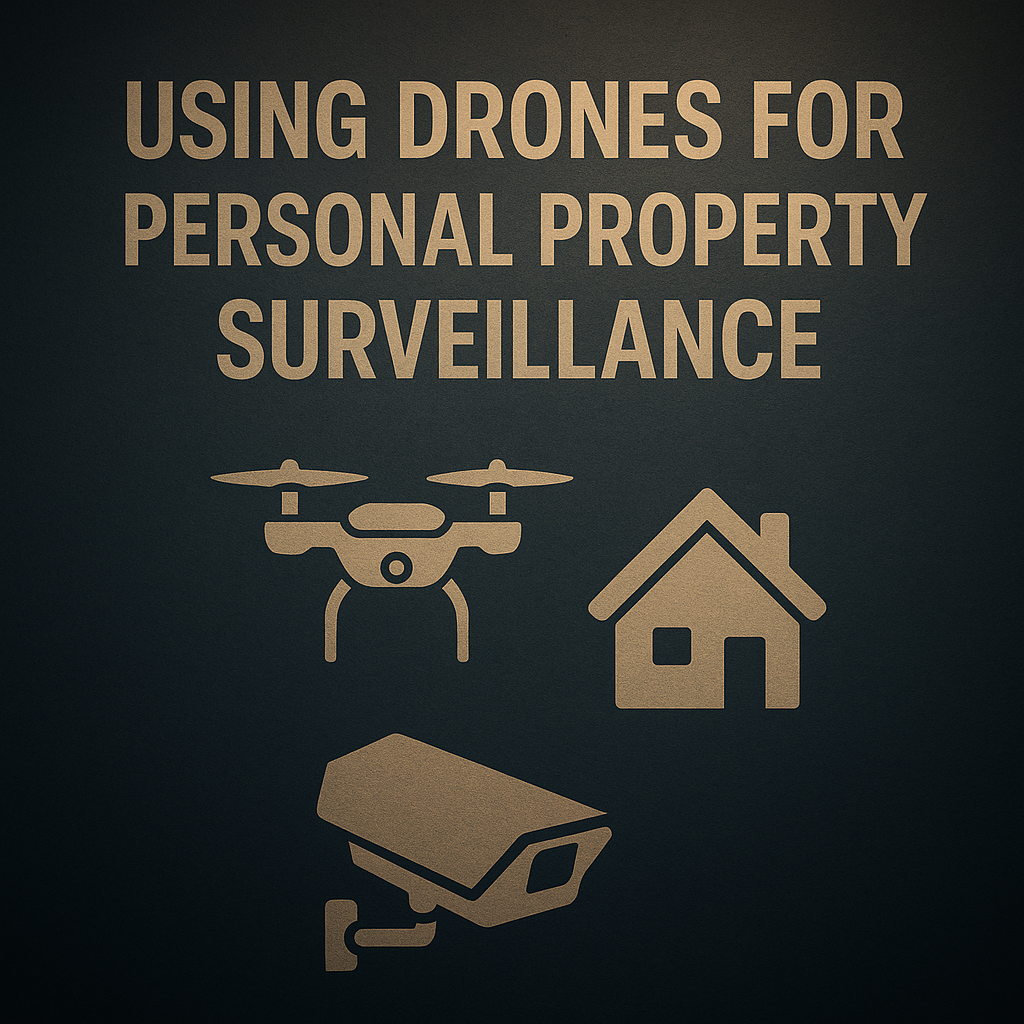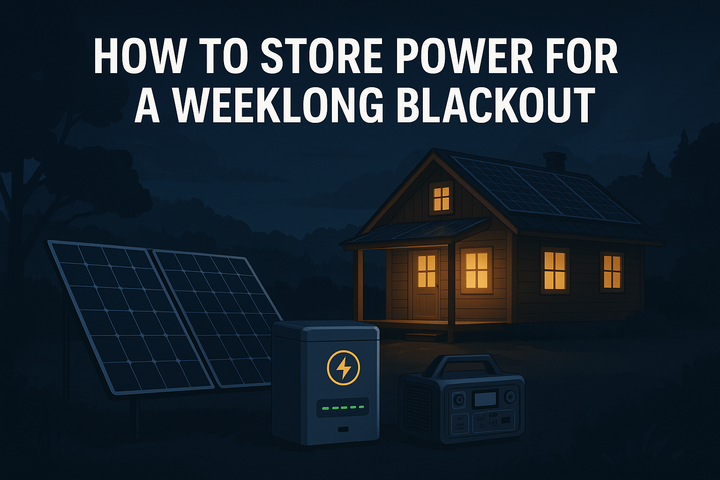Using drones for personal property surveillance, from cheap to pro
Drones are becoming powerful tools for keeping an eye on your property, outbuildings, and vehicles.

Whether you own acreage, a rural cabin, or just want to check your roof and perimeter after a storm, drones can provide aerial visibility that’s fast, safe, and cost-effective.
Below you’ll find a list of drone options ranging from inexpensive starters to professional-grade models, along with a printable flight checklist to keep every mission safe and organized.
Why use drones for property surveillance?
Using a drone for property surveillance gives you a powerful new way to monitor, inspect, and protect what you own.
Instead of relying only on fixed cameras or walking the perimeter, drones give you quick aerial visibility across large or hard-to-reach areas.
They allow you to see what’s happening in real time, document conditions, and capture clear photo or video evidence when something seems off.
Here are some of the most common and practical uses:
- Inspect fences, gates, and livestock: For rural or agricultural landowners, drones can save hours of walking. You can quickly fly along fence lines, check for breaks, and ensure animals are safe without physically touring acres of terrain.
- Roof and building inspection: After a windstorm or hail event, a drone makes it easy to inspect rooftops, chimneys, and solar panels for damage without climbing ladders or hiring an inspector. This is especially helpful for identifying leaks, missing shingles, or solar panel debris.
- Driveway and perimeter monitoring: A drone can monitor long driveways, gates, and access points for unusual activity. When motion sensors or security cameras alert you, you can launch your drone to verify what’s happening from a safe distance.
- Recording evidence of trespassing or vandalism: Drones can document property damage, unauthorized vehicles, or intrusions with timestamped video. This footage can serve as valuable proof for insurance or law enforcement if needed.
- Wildlife or environmental checks: Large property owners can use drones to assess wildlife movement, track erosion, or survey land features after floods or fires.
When used responsibly, a drone becomes part of a modern home and property security system, complementing fixed cameras, alarms, and lighting.
Always follow local aviation and privacy laws. Stay under altitude limits, maintain line of sight, and never record or fly over areas you don’t own or have explicit permission to monitor.
With safe operation, drones can significantly improve your situational awareness, save time, and add a powerful layer of self-sovereign security to your land and assets.
Drone recommendations
(inexpensive → expensive)
Ryze Tello
Price: Around $100
A small, safe beginner drone perfect for short flights and practice.
It won’t record professional footage but helps you learn navigation and control.

Holy Stone HS720 / HS720E
Price: Around $250
Foldable GPS drone with 4K camera and return-to-home.
Excellent balance of quality and affordability for routine property checks.

DJI Mini 2
Price: Around $450
Compact and under 250 g in many regions (less regulation).
Great 4K footage, stable flight, and solid range for everyday surveillance.

DJI Mini 3/4/5 Pro
Price: Around $750
Improved sensors, obstacle detection, and long flight time.
Ideal for inspecting large properties or creating detailed records.

DJI Air 2S
Price: Around $1,000
A 1-inch sensor and long range make it excellent for low-light or long-distance observation.
Professional image quality in a compact body.

DJI Mavic 3 / Mavic 3 Classic
Price: $1,500+
Top-tier optics, long endurance, and omnidirectional obstacle sensing.
Best choice for large properties or professional applications.

Recommended accessories
- Extra batteries and charging hub
- ND filters for clear footage in bright light
- Spare propellers and carrying case
- High-speed microSD cards
Drone Flight Safety Tips
Flying a drone for property surveillance or inspection can be both rewarding and highly effective, but it also carries responsibility.
Safe drone operation protects not only your equipment but also the privacy and safety of others around you.
Whether you’re flying a small quadcopter in your backyard or a professional model across several acres, follow these key drone safety practices before every flight.
1. Maintain line of sight
Always keep your drone visible with the naked eye.
Losing sight of your aircraft is one of the fastest ways to lose control or break aviation rules.
Maintaining line of sight ensures you can respond quickly if the drone experiences wind drift, GPS interference, or unexpected obstacles.
2. Check your environment
Before taking off, scan the area for people, pets, vehicles, trees, and power lines. Avoid flying near airports, highways, or restricted airspace.
For property surveillance, it’s best to operate over open ground or your own land where you have full control and consent.
3. Verify airspace and local rules
Use apps such as B4UFLY (in the U.S.) or NAV Drone (in Canada) to check airspace restrictions. Some drones also display built-in no-fly zones.
Following local regulations not only keeps your flights legal but prevents interference with emergency services or manned aircraft.
4. Respect privacy laws
Never record video or photos beyond your property boundary without permission.
Drone privacy complaints are rising globally, and even unintentional overflight can lead to legal issues.
Keeping your camera pointed toward your own property avoids conflict and builds good community trust.
5. Watch your battery and signal strength
Battery awareness is critical during long flights.
Set your return-to-home (RTH) feature before takeoff and plan to land when power drops below 25%.
Keep an eye on controller signal quality, especially if you’re inspecting behind buildings, trees, or hills that can block radio connection.
6. Avoid flying over people or traffic
For safety, never hover above crowds, roads, or moving vehicles.
Even small drones can cause injury or damage if they fall or malfunction.
Choose a clear area away from people whenever possible.
7. Practice in open areas first
Before flying complex patterns or inspecting high roofs, practice in an open field to get comfortable with your controls, camera angles, and return-home function.
Familiarity with your drone’s behavior in different conditions is the best insurance against accidents.
8. Prepare for emergencies
Know how to trigger your drone’s emergency stop, manual landing, or RTH command quickly.
If the drone loses GPS or encounters strong wind, calmly switch to manual mode and bring it down safely.
9. Keep your drone well maintained
Inspect propellers for cracks or looseness before and after every flight.
Keep sensors clean, update firmware regularly, and store batteries in a cool, dry place.
A well-maintained drone performs better and lasts longer, reducing risk and cost.
Free resource: Personal Property Drone Flight Checklist
Download this ON Network printable flight checklist to use before every flight:
This one-page checklist covers pre-flight, takeoff, in-flight, landing, and post-flight steps to keep your surveillance runs safe and documented. Includes all of the Safety Tips as well.
Final thoughts
A drone is an excellent addition to any self-sovereign property toolkit.
It gives you situational awareness without physical risk, helps document incidents, and provides peace of mind when you can’t be everywhere at once.
Used responsibly, drone surveillance can strengthen your home and property security for years to come.



Comments ()